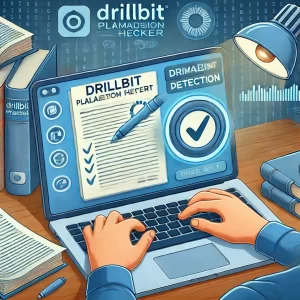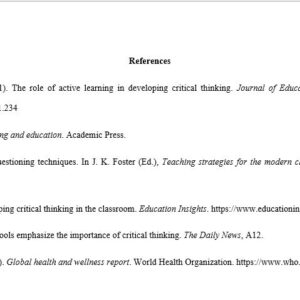How to reduce plagiarism without changing the meaning of your content

Plagiarism is a serious issue in academic writing, content creation, and research. Many writers struggle with reducing plagiarism while ensuring that the original meaning of their work remains intact. Simply replacing words with synonyms or making minor edits is often not enough, as plagiarism detection tools like Turnitin and Drillbit can still recognize structural similarities.
This article explores effective techniques to remove plagiarism while preserving the original message, ensuring that your content remains clear, meaningful, and plagiarism-free.
Hire professional Plagiarism Removal Services
While self editing is effective, hiring professional Plagiarism Removal Services can speed up the process and ensure better results.
Why hiring experts is the best option:
- Experts use high-quality tools – Professional services have access to advanced software beyond free or basic tools.
- Knowledge and experience – Skilled professionals understand the best rewriting techniques to preserve meaning while eliminating plagiarism.
- Understanding of plagiarism detection tools – Experts are familiar with Turnitin, Drillbit, and other detectors, ensuring content is optimized to pass checks.
- Time-saving and accuracy – Hiring a professional service guarantees efficiency, saving time while ensuring plagiarism-free content.
💡 Solution: Combine manual rewriting with AI-based tools for optimal plagiarism reduction.
Understand how plagiarism detection works
Before attempting to remove plagiarism, it is essential to understand how plagiarism detection tools analyze content. These tools do not just check for exact word matches but also assess sentence structure, phrasing, and the flow of ideas.
Key aspects that plagiarism detectors analyze:
- Direct word matching – Identifies identical phrases and words.
- Structural similarity – Detects rewritten content that follows the same sentence structure.
- Paraphrased content recognition – Recognizes changes in wording but not in meaning.
- Citation checking – Flags missing or incorrect citations.
💡 Solution: To effectively reduce plagiarism, focus on structural modifications, proper citations, and content transformation rather than just word substitution.
Use paraphrasing techniques effectively
Paraphrasing is one of the best ways to make content unique without changing its meaning. However, improper paraphrasing can still be detected as plagiarism.
Effective paraphrasing techniques:
- Break long sentences into shorter ones – This alters sentence structure while keeping the meaning intact.
- Use different sentence formats – Convert active voice sentences into passive voice and vice versa.
- Change word order and phrasing – Rearrange the sentence structure while maintaining logical coherence.
- Use synonyms wisely – Do not just replace words; ensure the new words fit naturally within the sentence.
💡 Solution: Ensure that your paraphrased content conveys the same message while appearing distinct from the original.
Cite sources properly to avoid accidental plagiarism
Many cases of plagiarism result from missing or incorrect citations. Even if you rewrite content, failing to credit the original source can still be considered plagiarism.
Best citation practices:
- Use proper citation styles – Follow APA, MLA, Chicago, or any style required by your institution.
- Give credit even for paraphrased content – If the idea is not yours, it still requires citation.
- Check for missing references – Always cross-check citations to ensure completeness.
- Use quotation marks for direct quotes – If a sentence is copied word-for-word, use quotation marks and provide proper attribution.
💡 Solution: Run a citation audit before submitting your work to ensure all borrowed ideas are correctly referenced.
Rewrite content with an explanatory approach
Instead of making minor changes to a sentence, try explaining the concept in your own words. This ensures originality while keeping the core message intact.
How to rewrite content without changing meaning:
- Understand the concept fully – The better you understand the topic, the easier it is to express it differently.
- Summarize ideas instead of copying phrases – Focus on re-explaining rather than rewording.
- Use examples and analogies – Adding relevant examples can make the content unique.
- Expand or simplify explanations – Depending on the context, either elaborate or condense the information.
💡 Solution: Approach rewriting as if you were teaching the concept to someone unfamiliar with it.
Maintain readability and writing quality
While reducing plagiarism, maintaining the clarity and coherence of your content is equally important.
Writing quality tips:
- Avoid excessive word substitutions – Using too many synonyms can make sentences unnatural.
- Keep sentences logically structured – Ensure the rewritten content still flows smoothly.
- Maintain a natural writing tone – Do not force changes that make the text sound robotic.
- Proofread thoroughly – Check for grammar and coherence after rewriting.
💡 Solution: Prioritize clarity over mechanical modifications to ensure your content remains reader-friendly.
Conclusion: Achieving Originality while preserving meaning
Reducing plagiarism without changing the meaning of your content requires more than just swapping words. By hiring professional plagiarism removal services, to ensure effective paraphrasing, proper citation, and explanatory rewriting you can ensure originality while maintaining clarity.
Key takeaways:
- Understand how plagiarism detection tools work to avoid detection.
- Use structural and logical paraphrasing instead of word substitution.
- Always cite sources correctly to prevent accidental plagiarism.
- Rewrite concepts instead of copying phrases to maintain originality.
- Hire professional plagiarism removal services to enhance the process.
- Ensure readability and coherence while making changes.
💡 Final tip: Before submitting your work, run a final plagiarism check to confirm originality and make necessary improvements. 🚀

